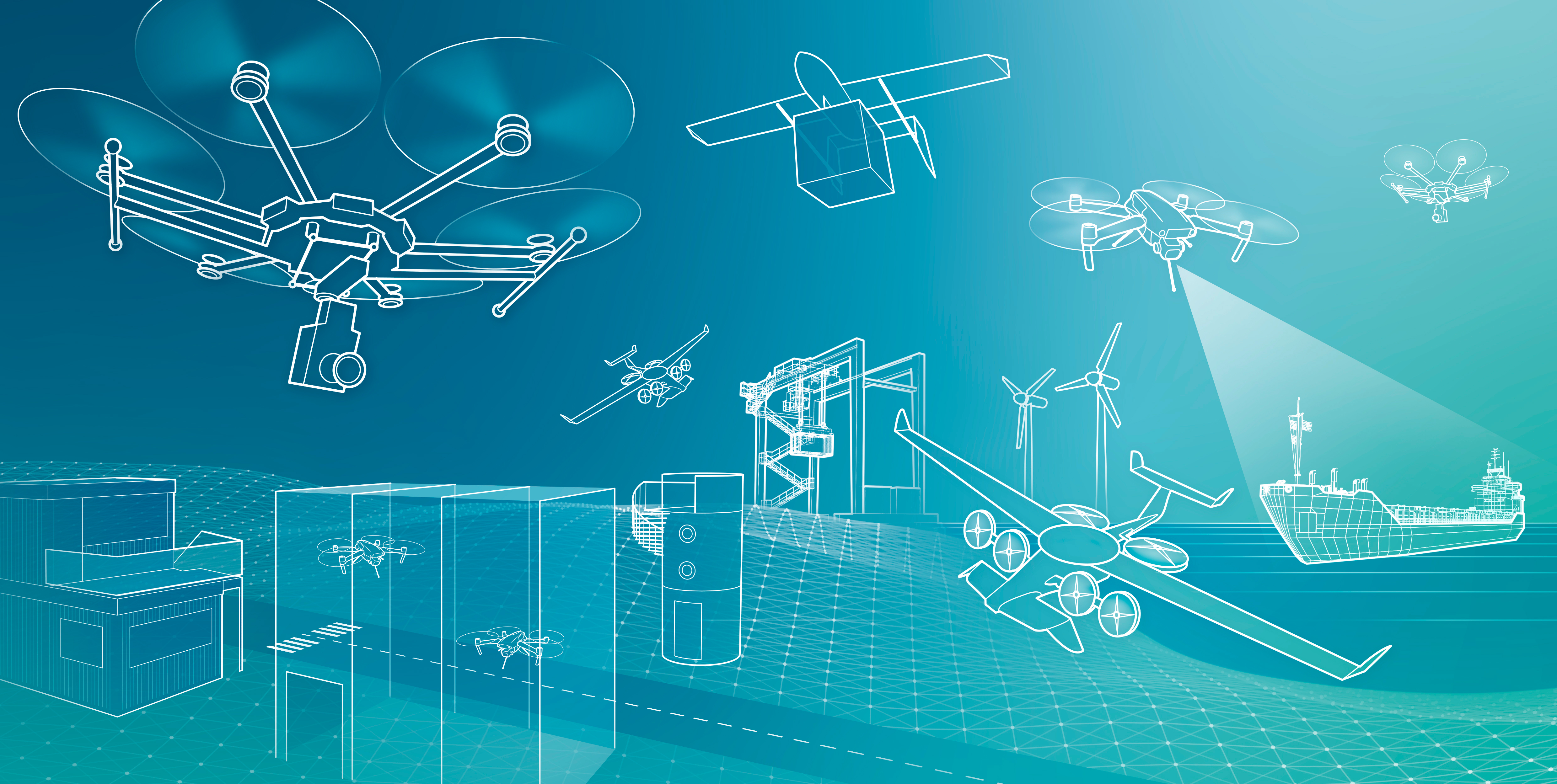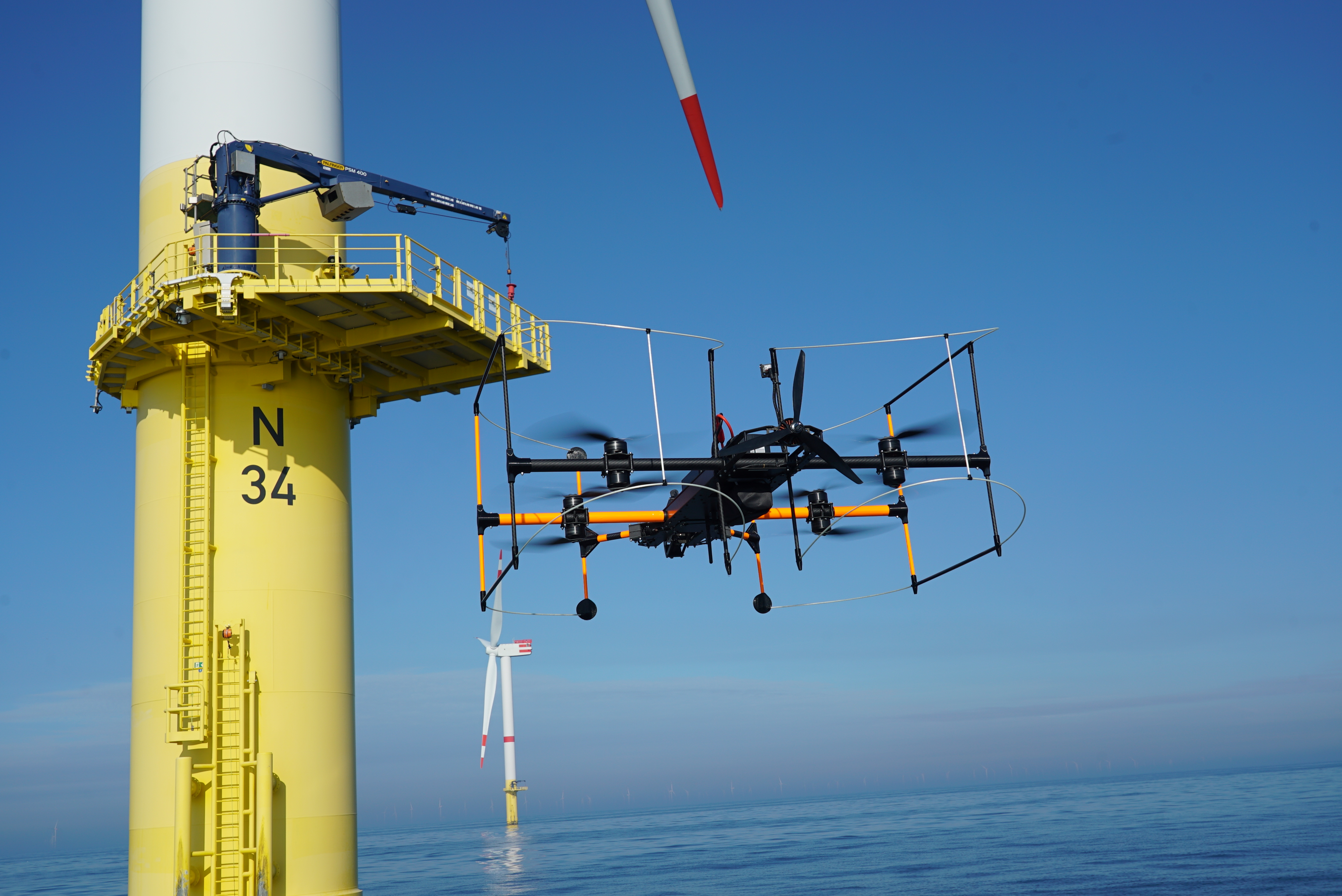In 2022, the Offshore Drone Campus at Steubenhöft Cuxhaven was launched. As a close cooperation between the Fraunhofer-Gesellschaft, scientific partners and industry, the development and research of drones and their usage concepts for the offshore sector are planned there. The focus of Fraunhofer IFAM is on questions of maintenance and inspection, as well as repair and monitoring of essential maritime structures, including regulatory frameworks. The goals are to achieve cost reduction through autonomous long-term inspections of, for example, offshore wind energy plants, and to increase the sustainability of energy production through the use of electrically-powered flight devices as opposed to manned helicopters with combustion engines.
To achieve these goals, Fraunhofer IFAM in Cuxhaven is working on the following priorities:
System configuration of UAS
- Mission-dependent configuration of UAS systems to cover individual needs
- Examination of the possibilities of energy supply by comparing battery systems, combustion engines (fuel hybrid drive), and fuel cells (hydrogen hybrid drive)
Component development
- Development of fault-tolerant propulsion systems for safe drone maneuvering
- Development of material protection concepts to protect electrical components and structural components from constant salt exposure, high humidity, and UV radiation
- Research on the compatibility of end-effectors and sensor systems with offshore UAS
Flight operations and air traffic control
- Continuous flight monitoring and ensuring flight control through the development of collision avoidance systems, redundant communication and control units, and navigation systems for variable environmental conditions.
Real-world testing of missions and individual components is a crucial building block, with direct missions conducted and monitored on the North Sea through close cooperation with the "Test Center for Maritime Technologies" and the use of the research vessel "Joseph von Fraunhofer." BVLOS (Beyond Visual Line of Sight) missions are also possible.
 Fraunhofer Institute for Manufacturing Technology and Advanced Materials IFAM
Fraunhofer Institute for Manufacturing Technology and Advanced Materials IFAM

